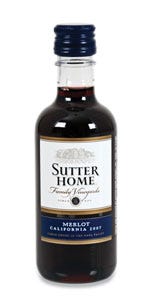Barrier-coated PET bottles bring eco-benefits to wine brand
January 29, 2014

Barrier-coated PET bottles bring eco-benefits to wine brand
Sutter Home Winery is now using PET bottles from Ball Corp. (www.ball.com) for all of its 187-mL wine bottles sold throughout the U.S. The bottles feature Plasmax®, a transparent, internal silicon-oxide barrier coating technology, that protects the wine inside the bottle, provides exceptional clarity and does not contaminate the PET recycling stream because it is easily removed during the recycling process.“The plastic bottles weigh only one-sixth what the glass bottles weigh, and they're much smaller, so consumers get the same amount of wine in a smaller, unbreakable, less wasteful and recyclable bottle,” says Wendy Nyberg, senior director of marketing for Sutter Home, which began using Ball's custom-designed PET wine bottles in select markets in 2005 and has gradually increased distribution since then.
“We know that the Plasmax barrier coating Ball provides will keep our wine fresh and that the bottles can still be easily and effectively recycled,” she adds. “Producing the PET bottles generates 60 percent fewer greenhouse gasses than producing the glass bottles, plus the smaller PET bottles allow us to use less fuel and gain supply chain efficiencies, because we get more bottles on a pallet and on a truck.”
The bottles preserve the look of the original glass container and run on the winery's existing filling lines. Sutter Home is pleased with consumer acceptance of the PET bottles as well as the entrée they provide into venues that do not allow glass.
You May Also Like


